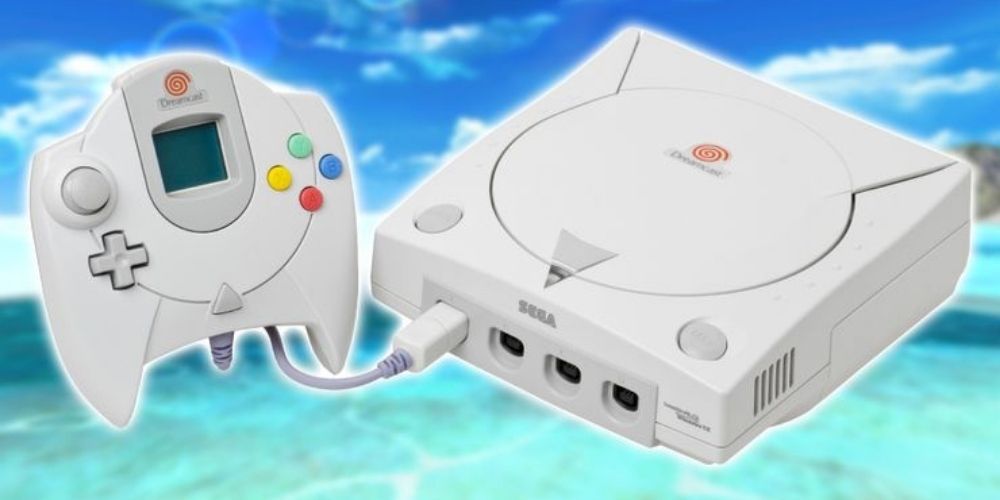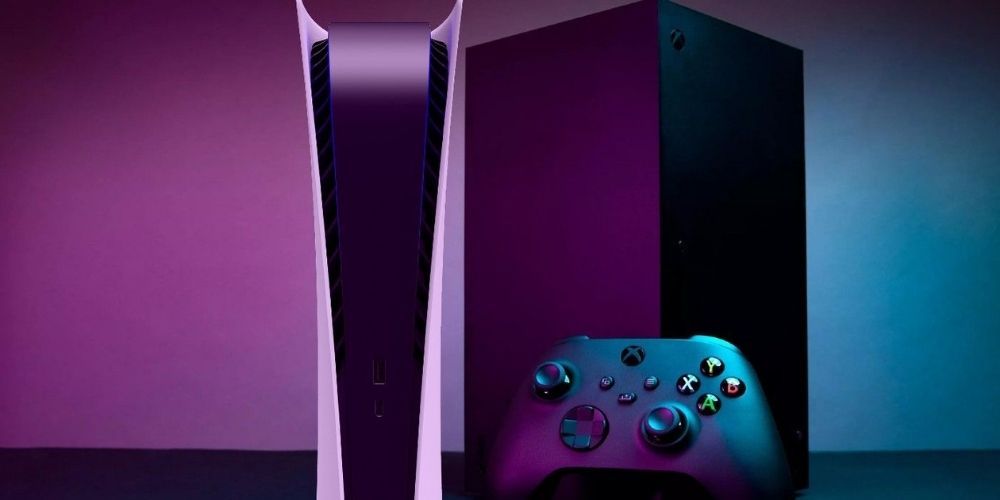The bestselling consoles get all the love. Everyone wants to know who sold the most units and which gaming device has the most fans. But what about the worst-selling consoles? The ones who made mistakes, or perhaps didn't have the right branding strategies, thus falling behind their competitors?
As history has proven with consoles like the GameCube, some lesser-selling contenders have ended up developing large cult followings and have received ample amounts of praise through retrospectives, proving they were merely diamonds in the rough, unearthed a little too late. It's proof that even the worst-selling consoles have a story to tell.
9 1st Generation: Atari Pong (Around 150,000 Units)

Everyone probably knows Pong. It was an arcade game that took the world by storm, energized the digital gaming market, and helped Atari's name get cemented in entertainment history. However, the at-home version of the game, also developed by Atari, didn't fare so well. The console, called Home Pong, was a hit, selling more than 150,000 units.
However, Pong was in fact a copy of a game that already existed on the Magnavox Odyssey called Table Tennis. Atari was slapped with a lawsuit, hurting the company's reputation and forcing them to pay royalties to Magnavox whenever a Pong game was sold. Despite this (and the fact that the Odyessy went on to outsell all other 1st-gen consoles), Atari's Pong is still one of the most influential games of all time.
8 2nd Generation: Fairchild Channel F (Around 250,000 Units)

Gaming's 2nd generation took place from the late 70s into the early 80s, leading up to the industry's crash in '83. During this era, Atari reigned supreme, until they completely destroyed the industry due to releasing too many rushed, poorly-made games, causing consumers to lose faith and interest in gaming.
But the true underdog was the Channel F, launched in 1976. It was the first console to use game cartridges, allowing one machine to play a variety of games. It was a technological breakthrough and enabled players to buy a wide range of games, including sports, pinball, and even virtual gambling titles. However, once Atari launched the VCS/2600, Fairchild was unable to compete.
7 3rd Generation: Atari XEGS (Around 100,000 Units)

Atari's cheap and lousy games were one of the main causes of the gaming crash of '83, creating a vacuum in the industry, which SEGA and Nintendo gladly filled with their new consoles - the Nintendo Entertainment System and SEGA Master System. However, Atari tried to hang on, releasing the XEGS.
The console was a redesign of Atari's 65XE computer. It was impressive because it could be used as a computer or a console, had backward compatibility for all of Atari's 8-bit games, and had a lineup of unique peripherals, including a keyboard. Though the system had hardly any new games, it was impressive in its versatility. Sadly, it wasn't enough to save Atari's reputation.
6 4th Generation: CD-I (570,000 Units)

During the early 90s, the Console Wars were in full swing between Nintendo's SNES and SEGA's Genesis/Mega Drive. However, the decade also produced tons of odd consoles that never stood a chance. Most notable was Phillip's CD-I multimedia machine. The console had disc-based encyclopedias, "edutainment" titles, and most notoriously, video games.
Due to a bizarre contract dispute with Nintendo, the Phillips was legally allowed to create its own video games based on Nintendo characters like Mario and Zelda. The games were ridiculous and hated, thus making them rare to find these days. They're now going for as much as $6,000 on eBay, proving that even despised games can become coveted collectibles with a story to tell.
5 5th Generation: Atari Jaguar (125,000 Units)

Atari's reputation never recovered after the gaming crash in the 80s, and 1993's Jaguar proved to be their last entry in the console market, selling only 125,000 units. However, despite the low sales, the console was actually quite inventive. It combined two 32-bit chips to create a "64-bit" system, years ahead of the N64 and others.
Sadly, programming for the duel-chip system was a mess, so many companies simply refused to work with Atari. However, when done right, as with the highly praised Alien vs. Predator and Rayman games, the console proved itself to be a worthy contender. Sadly, due to the company's reputation, its true brilliance was only experienced by a small number of gamers.
4 6th Generation: SEGA Dreamcast (9.13 Million Units)

As the world entered the new millennium, the gaming industry became the most competitive it had ever been. Better technology led to better systems, and the arrival of the PS2 changed gaming forever. "Fun" was no longer the sole purpose of gaming. It now needed cutting-edge graphics, a movie-quality soundtrack, and massive-sized game worlds.
SEGA, in a desperate attempt to save itself after the disastrous release of the 32X and Saturn, wanted to have the first 6th-gen console on the market, releasing the Dreamcast in '99. Sadly, this gave every other company time to observe what worked and what didn't, allowing them to construct better consoles. By 2001, the Dreamcast was discontinued due to low sales - the same year that the GameCube and Xbox hit the market.
3 7th Generation: Xbox 360 (24 Million Units)

By the 7th generation, gaming legends Atari and SEGA had been killed off, leaving the console world to now consist of three juggernauts: Sony, Nintendo, and Microsoft. The competition was intense and all three 7th-gen consoles - PS3, Wii, Xbox 360 - are considered absolute classics.
However, due to the runaway success of Nintendo's new Wii console, Sony and Microsoft were forced to play catch-up. Still, the 360 is by no means a bad console. In fact, many argue it's the best in series, with epic exclusive games like Halo 3 and Gears of War being standout successes.
2 8th Generation: Wii U (13.65 Million Units)

In just six years, Nintendo went from reigning supreme to struggling to stay relevant. The company released its Wii U console in 2012, leaving customers completely baffled. Was it an add-on to the Wii? Was it simply an upgraded version of the Wii until a new console came out? Nobody could quite grasp what the Wii U was, leading to abysmal numbers, and ultimately turning it into Nintendo's worst-selling console ever.
However, despite low sales, the Wii U's game library was outstanding: Pikmin 3, Donkey Kong Country: Tropical Freeze, Mario Kart 8, Bayonetta 2, Super Mario 3D World, and so many more. The console had heaps of critically praised titles, but nobody to play them. To solve this problem, Nintendo has re-released numerous Wii U games for the Switch.
1 9th Generation: TBD

The 9th generation of gaming just began in 2020 with the PS5 and Xbox X/S. This is because the Nintendo Switch is actually included in the 8th generation because it was released only 5 years after the Wii U and didn't make any real graphical or gameplay improvements. However, the Switch is quite versatile and is a marvel in its own right.
The two current competitors are both doing extremely well. PlayStation is, as always, outselling Xbox. The PS5 has already sold over 10 million units and would easily be selling more if it weren't for product shortages. But this doesn't mean Xbox is struggling. In fact, Microsoft has announced that the X/S is selling faster than any console in the company's history. This has led some to deem the 9th generation as gaming's newest Console War.
https://ift.tt/2ZlG7M7
September 26, 2021 at 12:00AM




